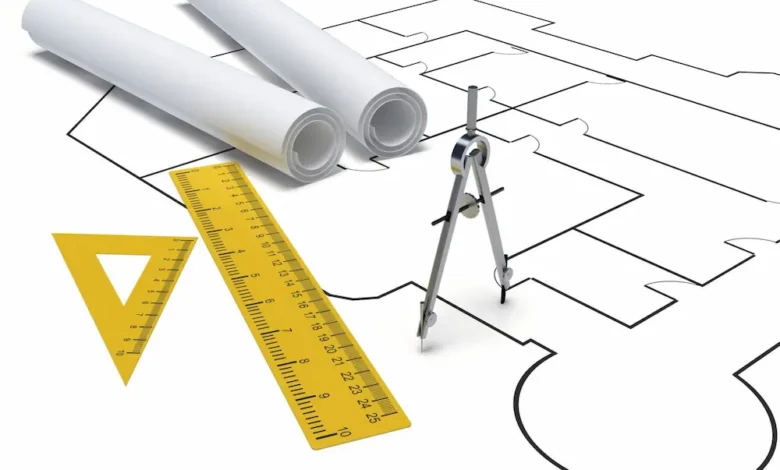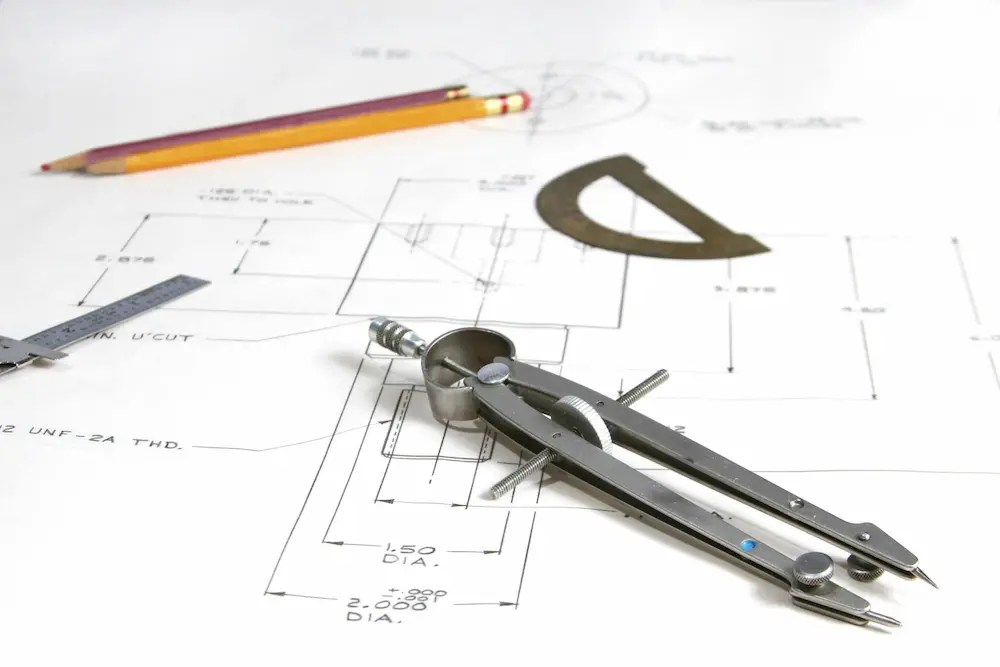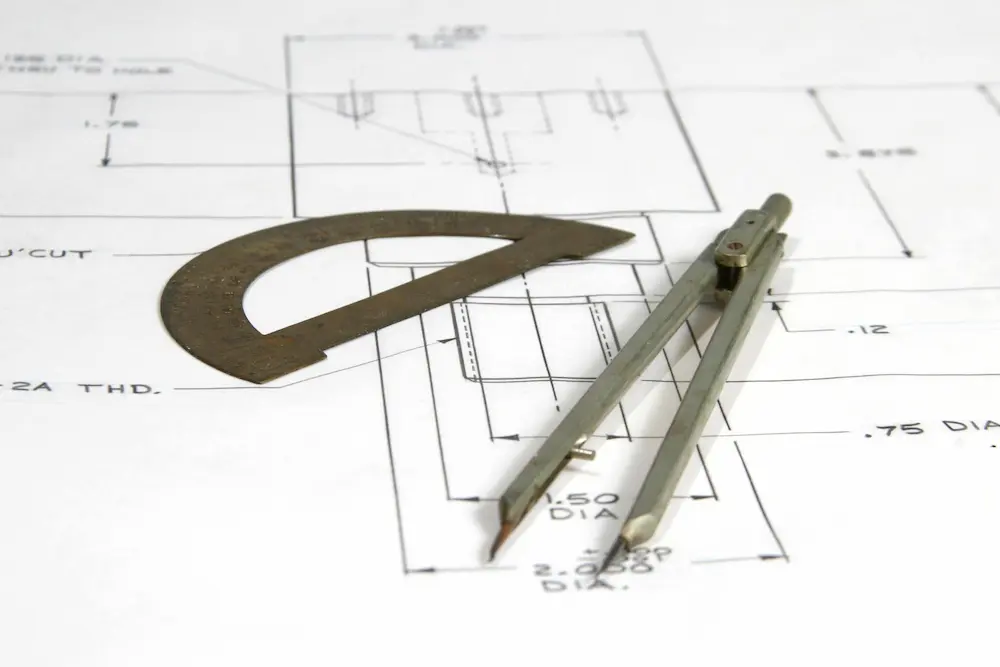
Mechanical Computer-Aided Design (CAD) drafting has undergone a remarkable evolution over the years. Transitioning from traditional 2D drawings to sophisticated 3D modeling. This transformation has revolutionized the way mechanical engineers and designers conceptualize. Visualize, and communicate their designs. In this article, we will explore the journey of mechanical CAD drafting. Tracing its evolution from the early days of 2D drafting to the advanced capabilities of modern 3D modeling software.
The Era of 2D Drafting
In the early days of CAD drafting, engineers relied heavily on 2D drafting tools. Create technical drawings of mechanical components and systems. These drawings were typically created using software applications like AutoCAD. Which provided basic drafting tools such as lines, circles, and arcs. Engineers painstakingly created detailed drawings of parts and assemblies. Specifying dimensions, tolerances, and other critical details.
While 2D drafting was a significant advancement over traditional manual drafting methods, it had its limitations. Engineers were limited to representing designs in two dimensions. Making it challenging to visualize complex geometric shapes and spatial relationships accurately. Additionally, making changes to 2D drawings was time-consuming and labor-intensive. Often requiring extensive rework to update all affected views and dimensions.
The Emergence of 3D Modeling
The transition from 2D to 3D modeling marked a significant milestone in the evolution of mechanical CAD drafting. 3D modeling software introduced a paradigm shift, allowing engineers to create digital representations of mechanical components and assemblies in three dimensions. This provided a more intuitive and realistic way to design and visualize complex geometries, enabling engineers to explore different design iterations and evaluate their performance more effectively.
Early 3D modeling software, such as Pro/ENGINEER and SolidWorks, introduced powerful features like parametric modeling, assembly constraints, and finite element analysis (FEA). These tools allowed engineers to create parametric models that captured design intent, enabling them to easily modify dimensions and parameters and see how changes impacted the overall design. Assembly constraints facilitated the creation of complex assemblies, ensuring that components fit together correctly and moved as intended.

Advancements in 3D Modeling Technology
As technology advanced, so did the capabilities of 3D modeling software. Today, modern CAD software offers a wide range of features and functionalities that empower engineers to design, simulate, and analyze mechanical systems with unprecedented precision and efficiency. Some of the key advancements in 3D modeling technology include:
1. Parametric Modeling
Parametric modeling allows engineers to define relationships between geometric features and parameters, enabling them to create flexible and adaptive designs. Changes made to one part of the model automatically propagate throughout the entire design, ensuring consistency and eliminating the need for manual updates.
2. Direct Modeling
Direct modeling enables engineers to make quick modifications to 3D models without worrying about underlying parametric constraints. This intuitive approach to modeling allows for faster iteration and experimentation, making it easier to explore design alternatives and optimize performance.
3. Simulation and Analysis
Modern CAD software offers robust simulation and analysis tools that enable engineers to evaluate the performance of mechanical systems under various conditions. Finite element analysis (FEA), computational fluid dynamics (CFD), and motion simulation capabilities allow engineers to predict how designs will behave in real-world environments, identify potential issues early in the design process, and make informed decisions to optimize performance and reliability.
4. Collaborative Design
Collaborative design features facilitate communication and collaboration among team members, allowing multiple engineers to work on the same design concurrently. Cloud-based collaboration platforms enable real-time sharing and synchronization of design data, streamlining the design review and approval process and reducing time-to-market.
Benefits of 3D CAD Drafting
The transition from 2D to 3D CAD drafting has brought about numerous benefits for mechanical engineers and designers:
1. Improved Visualization
3D modeling provides a more realistic and intuitive way to visualize mechanical designs, enabling engineers to better understand spatial relationships and identify potential design issues early in the process.
2. Faster Iteration and Prototyping
With 3D modeling software, engineers can quickly iterate on design concepts and create virtual prototypes to test functionality and performance. This accelerated design process reduces time-to-market and enables faster innovation and product development.
3. Enhanced Communication
3D models are easier to understand and communicate than 2D drawings, making it easier to convey design intent to stakeholders, clients, and manufacturing partners. This leads to fewer misunderstandings and errors during the manufacturing and assembly process.
4. Greater Design Flexibility
Parametric modeling and direct modeling tools give engineers greater flexibility to explore design alternatives and make changes on the fly. This empowers engineers to innovate and optimize designs for performance, efficiency, and manufacturability.

Future Trends in Mechanical CAD Drafting
Looking ahead, the future of mechanical CAD drafting is ripe with exciting possibilities. Emerging technologies such as generative design, additive manufacturing, and artificial intelligence are poised to further revolutionize the way mechanical engineers design and innovate. Generative design algorithms leverage AI to explore thousands of design iterations and identify optimal solutions based on specified constraints and objectives. Additive manufacturing technologies enable the production of complex geometries that were previously impossible to manufacture using traditional methods. Artificial intelligence and machine learning algorithms can analyze vast amounts of design data to identify patterns and insights that inform the design process and improve decision-making.
Conclusion
In conclusion, the evolution of mechanical CAD drafting from 2D to 3D modeling has transformed the way engineers design, visualize, and communicate mechanical systems. The transition to 3D modeling has brought about numerous benefits, including improved visualization, faster iteration, enhanced communication, and greater design flexibility. As technology continues to advance, the future of mechanical CAD drafting promises even greater innovation and efficiency, empowering engineers to push the boundaries of what is possible in mechanical design and engineering.
FAQs
-
What is mechanical CAD drafting, and why is it important?
- Mechanical CAD drafting involves creating digital representations of mechanical components and systems using computer-aided design software. It is important because it enables engineers to visualize, design, and communicate complex mechanical systems more effectively.
-
What are the main differences between 2D drafting and 3D modeling?
- In 2D drafting, engineers create technical drawings that represent components and systems in two dimensions, while 3D modeling involves creating digital models that represent objects in three dimensions. 3D modeling provides a more intuitive and realistic way to visualize designs and explore spatial relationships.
-
What are some of the limitations of traditional 2D drafting?
- Traditional 2D drafting has limitations in visualizing complex geometries and spatial relationships accurately. Making changes to 2D drawings can be time-consuming and labor-intensive, and it is challenging to convey design intent effectively.
-
How has 3D modeling technology advanced over the years?
- Over the years, 3D modeling technology has advanced significantly, offering features such as parametric modeling, direct modeling, simulation and analysis, and collaborative design capabilities. These advancements have made it easier for engineers to create, modify, and analyze complex mechanical designs.
-
What are the benefits of transitioning from 2D to 3D CAD drafting?
- Transitioning from 2D to 3D CAD drafting offers numerous benefits, including improved visualization, faster iteration and prototyping, enhanced communication, and greater design flexibility. 3D modeling enables engineers to better understand and communicate design intent, leading to faster innovation and product development.



